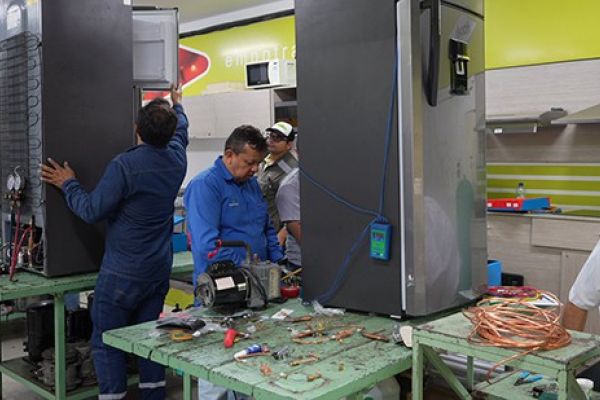Green technology for carbon-neutral development:
How end users benefit from climate finance
The authors of this human interest story thank all projects for the effort invested in providing their valuable input to help shape this story, titled Green technology for carbon-neutral development: how end users benefit from climate finance. This document helps contribute to overall efforts to capture and share lessons learnt from our project portfolio for future improvements to the Mitigation Action Facility’s work. Furthermore, we want to thank staff at the Technical Support Unit (TSU) of Mitigation Action Facility for their valuable input and resources invested in the development of this story.
The Mitigation Action Facility is a joint initiative of the German Federal Ministry for Economic Affairs and Climate Action (BMWK), UK Department for Energy Security & Net Zero (DESNZ), the Danish Ministry of Climate, Energy and Utilities (KEFM), the Danish Ministry of Foreign Affairs (MFA), the European Union and the Children’s Investment Fund Foundation (CIFF).
AFOLU Agriculture, Forestry and Other Land Use
BEIS UK Department for Business, Energy and Industrial Strategy
BMWK German Ministry for Economic Affairs and Climate Action
CEO Chief Executive Officer
CIFF Children’s Investment Fund Foundation
CO2 Carbon dioxide
CSA Climate-Smart Agriculture
DPP Detailed Preparation Phase
EE Energy Efficiency
EU European Union
GHG Greenhouse Gas
GIZ Deutsche Gesellschaft für Internationale Zusammenarbeit GmbH
IPCC Intergovernmental Panel on Climate Change
IYEM Instituto Yucateno de Emprendedores/ Entrepreneurs Institute of the Yucatán
KEFM Danish Ministry of Climate, Energy and Utilities
MFA Danish Ministry of Foreign Affairs
NAMA Nationally Appropriate Mitigation Actions
NSO NAMA Support Organisation
NSP NAMA Support Project
SDGs Sustainable Development Goals
SMEs Small and medium-sized enterprises
TSU Technical Support Unit
UK United Kingdom
UN United Nations
USD US Dollars
The Mitigation Action Facility – an agile, grant-based and multidonor mitigation fund – efficiently distributes and mobilises finance for carbon-neutral development.
The Mitigation Action Facility offers structured processes as well as financial mechanisms and technical support to partner countries to meet their climate goals.
The Mitigation Action Facility provides tailor-made finance for climate change mitigation projects in all sectors, notably energy efficiency, renewable energy, transportation, waste and agriculture, forestry and other land uses (AFOLU). Partner countries, or implementing organisations on their behalf, can apply for funding through open competitive Calls. The most ambitious and feasible mitigation projects are selected for support.
This support catalyses investment, strengthens capacities and triggers behaviour change, resulting in transformational sector-wide shifts to improve livelihoods, create co-benefits and establish carbon-neutral development pathways.
Since 2012
Approx. EUR 668 m
47 mitigation projects
Across 33 countries
“We didn’t have the appropriate storage, so we went through big losses. With the adoption of this technology, firstly, the losses will not occur in the future. Secondly, this will be key for promoting the welfare and the well-being of the farmers. The project will undertake capacity development at the farmer level which is a continuous activity for us. Especially as we have trained 2000 farmers on climate-smart agriculture, we want to ensure the adaptation of technology. That way, the situation and the welfare of the farmers will be highly improved because they will be able to produce without worrying about the end market.”

Energy Sector Deep Dive
Nakuru County is one of the major potato producing regions in Kenya. As potato farmers are dependent on rainfalls and advantageous market prerequisites, they can face enormous harvest losses when confronted with adverse environmental and market conditions. In 2021 alone, Starlight Potato Cooperative in Nakuru County, a beneficiary of Kenya Solar-Powered Cold Chain Services Project, lost over 5 million Kenyan shillings (over USD 40,000) due to unfavorable environmental and market conditions. Harvest losses not only present a threat to farmers’ livelihoods and food security but contribute to GHG emissions, since anaerobic decomposition of organic matter is a significant source of methane emissions. The ability to store harvested potatoes is key to preventing GHG emissions and to securing income opportunities for farmers, 75 % of which are women.
Globally, CO2 emissions represent three-quarters of greenhouse gas emissions. Energy-related (i.e. produced through the combustion of fossil fuels) together with industrial process emissions make up over 80 % of CO2 emissions. According to the 2022 IPCC report* , limiting human-induced global warming to a specific level requires limiting cumulative CO2 emissions, reaching at least net-zero CO2 emissions, along with large reductions in other greenhouse gas emissions. Hence, climate change mitigation projects in the energy sector are key to limiting CO2 emissions and therefore ensuring that Paris Agreement goals are met.
Not only does limiting CO2 emissions contribute to fighting climate change; energy efficiency projects within the Mitigation Action Facility portfolio heavily benefit from social development at a national and local level, aligning with the UN Sustainable Development Goals (SDGs). Companies, employees, families and communities can experience a positive change in their livelihoods. Co-benefits such as job creation, cost savings, improved health conditions as well as welfare improvement are important outcomes of projects for the people on site.
Projects focused on energy efficiency represent the largest share of projects in the Mitigation Action portfolio. The projects span a variety of sub-topics in green cooling, small-scale renewable energy, energy-efficient industrial equipment and building retrofitting to create so-called green buildings.
Implemented on a national scale and aligned with national mitigation strategies, energy projects change practices in a transformational way for households, industrial workers, energy service providers and business owners alike. This way, these stakeholders can actively take part in the green economic transition.
Mitigation Action Facility Portfolio
The green technologies promoted by a vast number of projects in the Mitigation Action Facility’s portfolio are intended to mitigate or reverse the effects of human activity on the environment. They provide zero or low greenhouse gas (GHG) emissions, are safe for use and foster health and quality of life improvements. They promote resource efficiency and facilitate the transition to renewable resource use as opposed to non-renewable and inefficient resources and technologies**.
Green cooling as a means to save the crop and improve societal welfare
Green cooling as a means to save the crop and improve societal welfare
Green cooling represents one of the four sub-topics of energy efficiency and a major aspect in Mitigation Action Facility’s portfolio. Private households as well as businesses can adopt the technology. Projects such as the Colombian project for the domestic refrigeration sector aim to reduce emissions in the refrigeration sector by 50 % through the introduction of innovative replacement programs, policy-level regulations, production line conversions, and financial incentives.
Benificiary of the substitution program I Training with national manufacturers of household refrigerators
The Colombian project for the domestic refrigeration sector aims to improve the lives of consumers through facilitating their access to new energy efficient and climate friendly domestic refrigerators. The project supports national producers of domestic refrigerators to transform their production line towards more climate friendly and energy-efficient domestic refrigerators. At the same time, the project is co-designing an innovative substitution program, which will enable lower-income households in Colombia to replace their old domestic fridges with new, eco-friendly and energy efficient units. Consumers can expect to reduce energy consumption in their homes by up to 35 % through such replacements and contribute to climate protection. Furthermore, technicians receive a state-of-the-art training, which improves their job prospects and offers them the opportunity to exchange knowledge on best practices and safety measures with colleagues and wider networks.
“The benefits of having a refrigerator with high energy efficiency are innumerable. Primarily, they can include savings for the consumers, and, on a larger scale, they can contribute to fighting the climate change that we are seeing today. The contribution of this training for my company is immense. It not only contributes to formalising the work that we do in this industry but also plays a role in effectively embedding the focus on climate change into industry culture.”
Refrigerator technician from Bucaramanga, Colombia

The Kenya Solar-Powered Cold Chain Services project is another Mitigation Action Facility green cooling project shaping the future of climate-smart agriculture. Designed to educate, inform and trigger a fundamental shift in the way farmers approach post-harvest management, the project will activate demand for cold chain services. It deploys 3,900 metric tons of cold storage capacity and connects smallholder farming cooperatives in Meru and Nakuru Counties to 50 retail markets across the country. The project will hence increase food security as well as agricultural productivity and farmers’ incomes in Kenya.
The project works with the Starlight Potato Cooperative, which aims to promote climate-smart agriculture (CSA) technologies, an integrated approach to managing cropland, livestock, forests and fisheries that address the interlinked challenges of food security and climate change. The Cooperative incentivizes farmers to adopt technologies that can help fight climate change and build greater resilience to external or unforeseen threats. With the help of the project, the cooperative collects data to understand how to adapt better to future challenges such as unforeseen market conditions and lack of rainfall. Solar-powered cold chain storage helps to store enough food for the market and ensures farmers have enough seeds. The farmers can then dispense their products to the market more gradually, thereby not only lowering GHG emissions but also greatly improving their own welfare.
UNDP team visit to Starlight Potato Cooperation for data collection purposes
Driving sales and improving social development with small-scale renewable energy
Driving sales and improving social development with small-scale renewable energy
Beyond contributing to farmer welfare, especially against harvest loss, plays a valuable role in the project’s mitigation potential. By using solar-powered cold chain options, farmers and cooperatives contribute to reducing GHG emissions in two ways: 1) by reducing anaerobic decomposition of organic matter, which is a source of methane emissions, and 2) by choosing solar-powered energy sources.
Energy-efficient solutions remain a preferred option for small and medium-size enterprises (SMEs) in Mexico. SMEs, often described as the backbone of the Mexican economy, represent 98 per cent of all businesses and account for around 12 per cent of total GHG emissions in Mexico. Energy efficiency has been identified as a mechanism for cost reductions in SMEs, thereby increasing their competitiveness and reducing GHG emissions.
Instituto Yucateco de Emprendedores (IYEM), the Entre- preneurs Institute of the Yucatán, part of the Mexico – Energy Efficiency in Small and Medium Enterprises Project, supports small and medium-size businesses by carrying out analyses of their productivity. Such studies demonstrate how energy-efficient technology can benefit companies’ production lines, as well as their employees. Based on the reports carried out by the SMEs with NSP support, SMEs provide credits and microfinance options for companies. With the help of the project’s initiative, an IYEM client in the craft beer sector identified its lack of energy efficiency. By analysing the possibilities for reducing its energy use, the company not only transformed itself into a green company but increased its production capacity, which led to more sales. This also allowed them to hire more employees and thereby contribute to economic and social development.
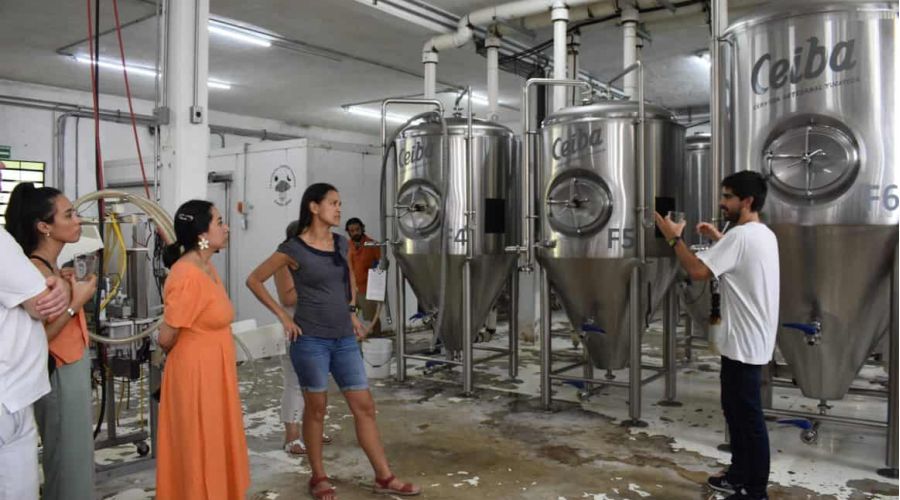
Site visit to understand efficiency measures being implemented for industrial processes
Interview
The future is right now: how a Yucatán entrepreneurship institute guides companies on their path to energy efficiency
What are the goals of your work at IYEM?
IYEM is an entrepreneurship institute here in Yucatán. We are part of the local state government. And I am in charge of directing innovation and the competitiveness of companies.
Why do you think it is important to introduce green technology to Mexican SMEs?
Green technology is now on the agenda for international entities because we are witnessing all the changes occurring around the world. Ten years ago, we were not aware of the impact of climate change. Now, we are conscious about technology and the planet. And with green technology, you can have a better quality of life and better social impact. But you need to complement this development with awareness about your planet, about your community, and about the future. For me, the future is right now – not two, three or five years from now.
How do you implement green technology in the companies you are working with?
I have to say, our first challenge is to educate and inform. The companies are not aware about energy efficiency. Whenever you talk about energy efficiency, every company thinks you mean solar panels. But it is not just about solar panels; it’s about their machines, their equipment, their employees, their schedules and their assets.
We launched an initiative to perform an in-depth analysis of 15 companies here in Yucatán. We are finishing the reports right now. The reports demonstrate to the companies that by investing in energy efficiency, your company will have this and these social, economic and environmental impacts. For us, and for all the public programs, it’s the best thing you can have – really good diagnoses, good results and to know how to ensure all the actions.
How does the project help the SMEs transform themselves into green companies?
So, now they can have a really good context: Where is my company at a certain point? And then the companies have a short-, medium- and long-term action plan to see how an investment could have good results. But also, it’s a message for the customer or the client that it’s something the planet needs – and that we’re all a part of it.
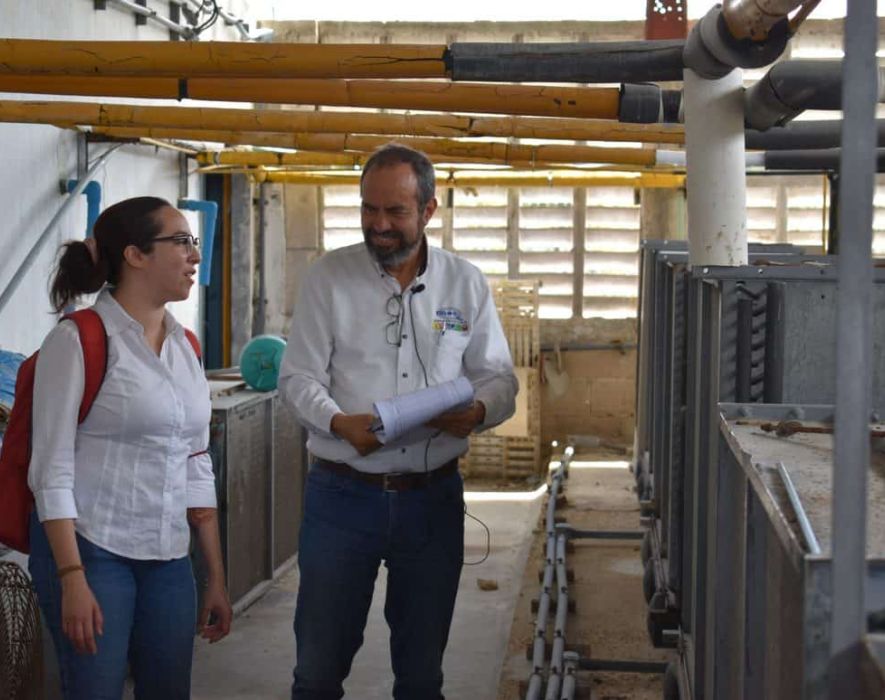
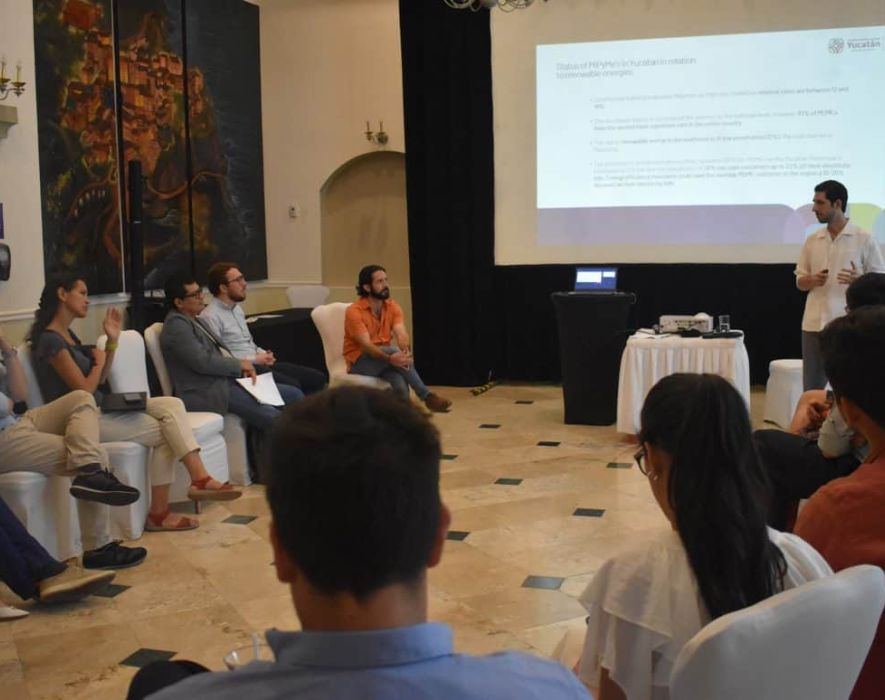
Regional exchange and energy audit carried out by IYEM
Benefits for SMEs from improved industrial energy efficiency markets in Brazil
The project Brazil Industrial Energy Efficiency (PotencializEE), also aims at promoting industrial energy efficiency investments. The project focuses on implementing energy efficiency projects in industrial SMEs within the state of São Paulo, thereby delivering a transformative push to Brazil’s energy efficiency market. PotencializEE focuses on thermal technologies; the entire energy audit centers around thermal energy savings as well as trainings and the certification of energy efficiency specialists. Thus, the program encourages the use of clean thermal technologies in industries in parts of Brazil where they are not yet widespread.
Avoiding wasted energy for heating and cooling in industrial processes has many economic, environmental and social benefits. SMEs become more competitive, new sustainable jobs and often the product quality improves, among other aspects. The actors along the energy efficiency supply chain include energy service companies, consultants, suppliers, public and private financial institutions, SMEs’ clients and employees. By primarily focusing on SMEs, the program creates spillover effects for the economy as a whole, as well as for individual employers. In the long term, the entire field of energy efficiency in Brazil will be strengthened.
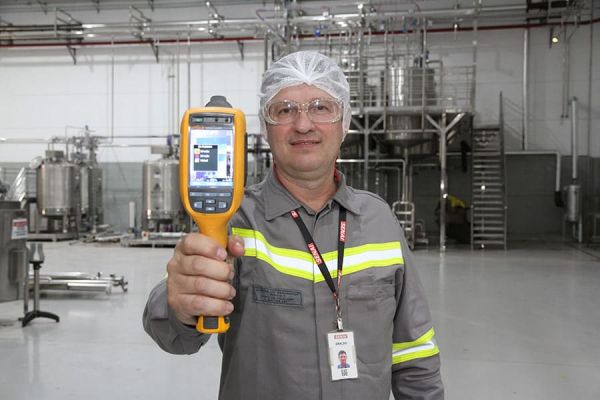
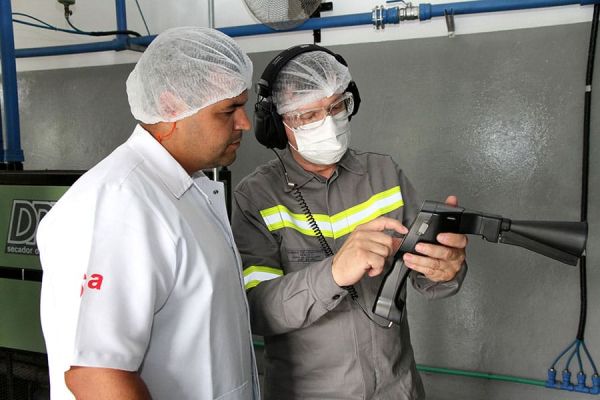
Energy audit carried by the project within a food processing industry in São Paulo
Retrofitting old buildings for thermal comfort
Besides green cooling, small-scale renewable energy, and energy-efficient industrial equipment, the retrofitting sector also aims to introduce green technologies to end users. One of the Mitigation Action Facility’s retrofitting projects is the Mongolia – Energy Performance Building Retrofitting project. The project aims to improve the energy efficiency of buildings in Ulaanbaatar, the country’s capital, by insulating precast apartment blocks, home to approximately 20 % of the city’s population.
About 45,000 families live in 1,077 blocks built between 1965 and 2000. Some of these blocks have high heat loss and high energy consumption due to ordinary wear and tear. Reducing the heat loss of the blocks is important for conserving energy, repairing and renewing the old and damaged exteriors of the buildings, prolonging the life of the buildings, and improving the living conditions of the residents. Insulating these blocks has social and economic implications. Energy and heat savings will increase the financial resilience of residents in the face of future rising energy prices. It will also offer the possibility of heat reserves. The life of the buildings will be extended by at least 30 years. The increase in heat supply will stabilise the buildings’ indoor temperature, thus reducing the risk of respiratory health conditions and positively impacting the health of residents. A comfortable and warm environment will improve the quality of life for the families who live there.
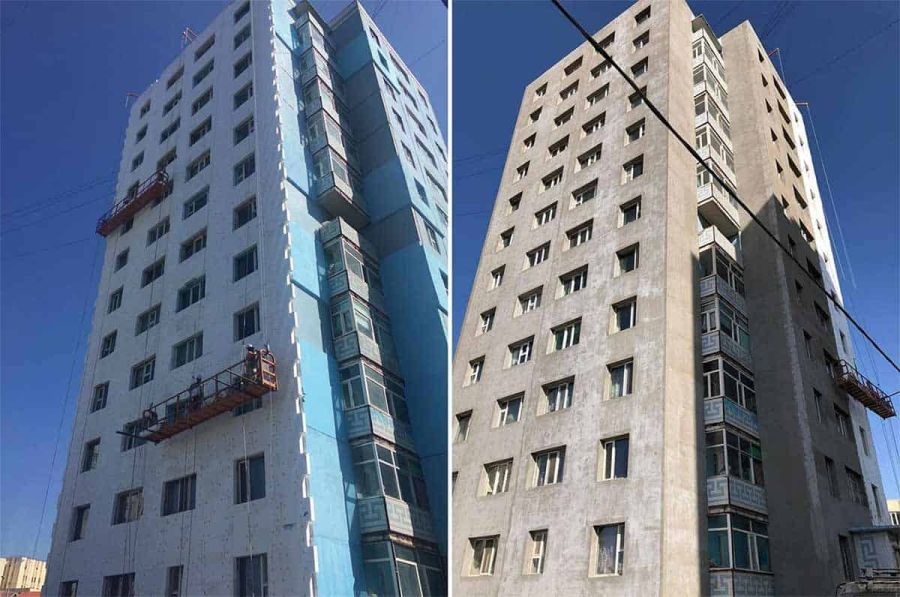
Interview
Modernising the housing sector with thermo-technical retrofitting in Ulaanbaatar, Mongolia
Why is it important to undertake a large-scale thermo-technical retrofitting of houses in Ulaanbaatar?
About 45,000 families live in 1,077 blocks built between 1,965 and 2,000 in 14 residential districts in Ulaanbaatar, the capital of Mongolia. Some of these blocks have high heat loss and high energy consumption due to ordinary wear and tear. Insulating these blocks is of high social and economic importance
How do residents in precast buildings benefit from the project’s activities? Could you give examples?
The project will not only benefit residents who live in older buildings with high heat loss but the heating network of Ulaanbaatar as well. In other words, the appearance and thermal comfort of the buildings will be improved by implementing the project. With this, the housing market value will increase by a certain percentage and the life of the buildings will be extended by at least 30 years. The most important benefits are energy and heat conservation, greater financial resilience of the residents despite future rising energy prices and the possibility of heat reserves of about 80 Gcal/h in the city’s heat network.
How do construction companies and homeowners’ associations benefit from the project’s activities?
The participants in the construction of the project can certainly benefit. Using the products of construction and insulation material manufacturing companies in the project will improve the financial efficiency of domestic manufacturers and contractors. In addition, construction companies will have the opportunity to provide jobs for many specialists during the project implementation period, as well as gain an understanding of new technologies.
How do the project’s activities address both carbon neutrality and social/economic development goals?
It is expected that by insulating the residential buildings, the energy used to heat the building will be reduced. The amount of raw coal burned for heat production by thermal power plants will decrease, and the carbon dioxide emitted from it will decrease. Implementing the project will increase the efficiency of construction material manufacturers and construction companies. Many workers in the construction industry will be provided with jobs during the project implementation period. In addition, the saved thermal energy can be used by households in newly built residential areas, townships and residential areas.

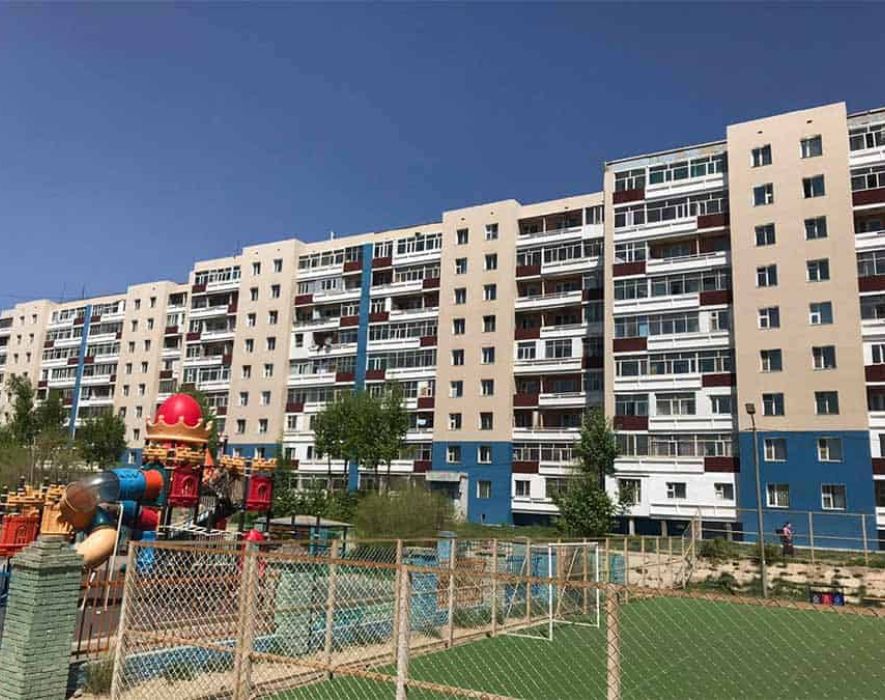
Renovation of pre-cast buildings in Ulaanbaatar
Implementing sector-wide mitigation actions for end users
Whether in the form of green cooling, small-scale renewable energy, energy-efficient industrial equipment, or building retrofits, green technologies enable climate change mitigation and economic prosperity. However, those benefiting most from these technologies are people. Business owners, employees, their families and whole neighborhoods can experience direct and qualitative improvement of their living conditions. Green technologies change the way small companies and large industries think about energy efficiency. They demonstrate the need for mitigation and adaptation to CEOs, as well as technicians and workers implementing the changes. They raise awareness about the risk of ever-rising GHG emissions and create a greater sense of responsibility for environmental stewardship in the minds of individuals, communities, and of governments implementing sectorwide mitigation actions.

Energy Efficiency in Small and Medium Enterprises
Status: Active
Selection Round: 4th Call

Domestic Refrigeration
Status: Active
Selection Round: 3rd Call

Energy Performance Building Retrofitting
Status: Active
Selection Round: 6th Call

Transformative Investments for Industrial Energy Efficiency NSP (PotencializEE)
Status: Active
Selection Round: 3rd Call

Solar-Powered Cold Chain Services
Status: Active
Selection Round: Ambition Initiative

Waste Solutions for a Circular Economy
Status: Implementation Phase
Selection Round: 5th Call

Agriculture

Energy Efficiency

Transport



